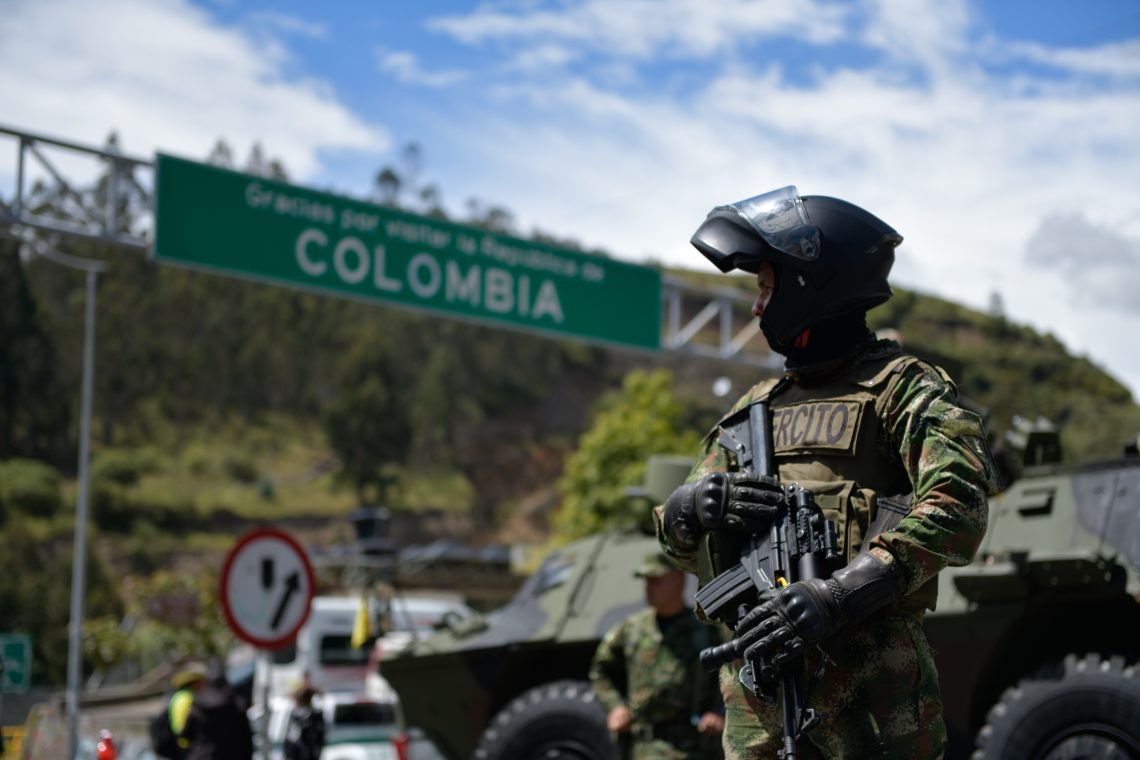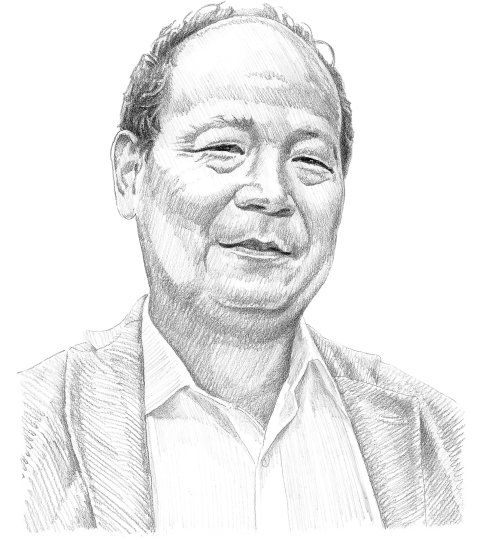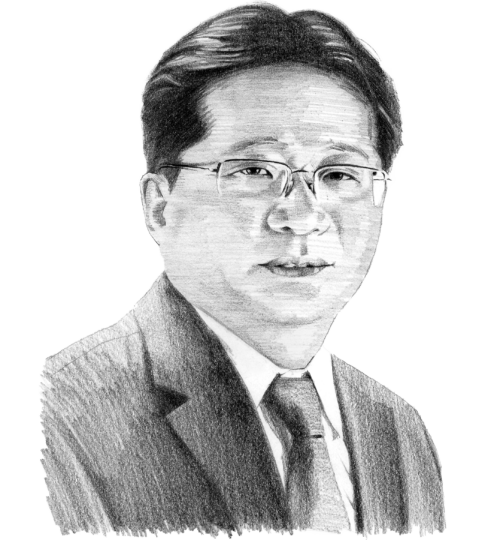Organized crime and security in Latin America
Transnational crime in Latin America is growing across the region, posing a challenge to democracies.

In a nutshell
- Criminal networks infiltrate governments, threatening democracy and security
- Mano dura policies reduce violence in the short term, but risk civil liberties
- Coordinated region-wide efforts are essential for lasting progress
- For comprehensive insights, tune into our AI-powered podcast here
Transnational organized crime poses an increasingly serious threat to public safety, democratic governance and state legitimacy in Latin America. Once primarily concentrated in countries like Mexico and Colombia, criminal networks have recently expanded into new regions such as Ecuador, Peru and Chile, integrating themselves both geographically and institutionally.
In response, many leaders have adopted militarized crackdowns, which resonate with publics facing rampant violence. While some short-term gains are clear, these strategies risk causing long-term harm to democratic institutions.
More sustainable alternatives like intelligence-led policing, judicial reform and social investment require greater political will and public support to overcome entrenched challenges. Latin American states face a choice: pursue regional cooperation and strengthening of institutions, or continue policies driven by short-term political expediency.
Latin America’s security environment
Transnational organized crime has become one of the most urgent and destabilizing challenges facing Latin America today. Fueled by global demand for illicit goods – particularly narcotics – organized criminal networks have extended their reach, evolving into sophisticated, multinational operations that defy borders with impunity.
While countries like Mexico, Colombia and Brazil remain key nodes in narco-trafficking, organized criminal networks have expanded their activities over the past decade into nations previously seen as peripheral to the drug trade, reshaping the region’s criminal landscape.
For instance, Ecuador has become a critical transit hub for cocaine exports, with powerful gangs like Los Choneros and Los Lobos competing for control and collaborating with Mexican cartels. Similarly, Peru, Bolivia and even Paraguay have experienced a surge in narco-trafficking and arms smuggling, partly due to weak border enforcement and increasing demand for coca base.
Argentina and Chile, once relatively insulated, are now grappling with rising violence and the presence of foreign criminal groups, especially in port cities where contraband flows are difficult to control. This expansion is not just geographic but also institutional, as these networks increasingly embed themselves in municipal governments, police forces and judicial systems, making the fight against organized crime much more complex and deeply rooted than it was in previous decades.
Moreover, the lines between criminal enterprises and formal politics have become dangerously blurred in countries from Mexico and Ecuador to Honduras and Venezuela, leading to the emergence of what scholars refer to as “hybrid governance” or “criminal governance.” These terms describe the coexistence of various sources of authority within a single space, where both legal and illegal actors manage issues related to violence, regulations and moral conduct.
Facts & figures
Homicide rates around the world

In these countries, organized criminal syndicates attempt to seize control of the state by bribing or coercing politicians, judges, law enforcement officers and bureaucrats to influence policymaking, enforcement and regulatory systems. These groups can then operate with impunity, shaping laws and governance to their advantage, weakening democratic institutions and eroding public trust.
The consequences are deeply felt by citizens, with rising homicide rates, mass displacement, attacks on journalists and the normalization of violence in everyday life. In many Latin American countries, particularly those with weaker governance like Honduras and Mexico, security ranks among the top public concerns, while nations like Chile experience relatively lower but growing unease.
The mano dura approach
In response, Latin American leaders have increasingly adopted mano dura (iron fist) strategies: militarized policies that focus on repression, mass arrests and deploying armed forces for domestic security. This approach has become especially popular in countries such as El Salvador, Mexico and Honduras, where public frustration with crime and weak governance is particularly intense.
El Salvador’s Nayib Bukele is the most emblematic case, having launched an aggressive crackdown on gangs that includes indefinite states of emergency, mass incarceration and a significant expansion of state surveillance, as explained in this GIS report. President Bukele’s strategy has led to a short-term reduction in homicides and attracted strong domestic and regional attention.
Several leaders across Latin America have taken similar approaches. Ecuadorian President Daniel Noboa campaigned on a security-first agenda and successfully secured reelection in April with an 11-point margin. He achieved this by implementing emergency measures and pledging a “Bukele-style” response to the rising violence. Argentine President Javier Milei has also made overtures in adopting these strategies.
One reason politicians have adopted these policies is that they are popular with voters. Faced with escalating violence, many citizens prioritize immediate safety, which shapes their electoral support for these policies. Public support for mano dura is strong, with many Latin Americans increasingly backing leaders who promise order through militarized crackdowns and assertive rhetoric. This trend is evident in countries from Guatemala to Costa Rica and Argentina.

Mano dura policies aim to address pressing security concerns. However, researchers, using experimental evidence from Cali, Colombia, have shown that mano dura policies have little to no effect on crime rates and may even exacerbate crime and human rights issues. Notably, these policies have been shown to enhance public perceptions of the military and increase calls for its involvement in domestic law enforcement. The political appeal of mano dura highlights how fear and frustration influence democratic preferences throughout the region.
In Ecuador, the onset of a militarized crackdown in January 2024 has coincided with an increase in forced disappearances, including of children, caught in the escalating internal conflict with criminal groups. While the country has seen a slight decrease in its homicide rate, reports of human rights abuses have sharply increased. In 2024, Ecuador’s homicide rate decreased to 38.8 per 100,000 people from 44.5 in 2023, when it was one of the highest in South America. For comparison, in 2019, Ecuador’s rate was among the region’s lowest at 6.7 per 100,000.
Mano dura policies can bring a sense of order to communities struggling with criminal violence, offering relief that many welcome after years of turmoil. Yet, over time, these measures may shift democratic values among the populations they aim to protect. This approach may address immediate crime and instability, but in the long run, it could lead to greater state control, often framed as a necessary law-and-order response.
Enhancing security through justice and regional coordination
Additionally, mano dura often proves ineffective when organized crime has deeply infiltrated and co-opted various aspects of the state. In fact, criminal governance is typically intertwined with broader structures of formal state authority. While criminal organizations may penetrate an unwilling state to exploit its resources, the government may also overlook illegal activities in exchange for illicit rents or the neutralization of third-party threats.
Consequently, the most effective efforts to combat organized crime have occurred in regions where independent prosecutors, judges and police have both the authority and resolve to prosecute gang members and the corrupt officials who shield them.
For example, in Guatemala, the International Commission Against Impunity in Guatemala, a United Nations-backed entity operating from 2007 to 2019, worked closely with independent prosecutors and judges. Their efforts exposed networks of politicians and military officials protecting narco-traffickers, culminating in the “La Linea” case in 2015, which led to the resignations and arrests of President Otto Perez Molina and Vice President Roxana Baldetti for their roles in a customs fraud ring.
More recently, in Rosario, Argentina, prosecutors successfully convicted police officers and local politicians who protected drug gangs like Los Monos or were themselves involved in organized crime networks. Although President Milei has expressed interest in adopting mano dura policies, state prosecutors have been effective in pursuing cases like the Rosario convictions.
In Ecuador, Attorney General Diana Salazar has spearheaded a bold initiative to combat political corruption and organized crime, making the country a notable example of progress in prosecuting public officials linked to criminal networks in Latin America. Her investigations, including the high-profile “Metastasis” case, have exposed deep collusion among criminal organizations, judges, police officers, prison officials and politicians. Despite facing death threats, Ms. Salazar has stood firm as an independent and credible prosecutor amid a rising tide of organized crime’s influence over institutions.
Read more by U.S. Naval Academy Associate Professor Dr. John Polga-Hecimovich
- Bolivia’s political chaos signals an economic meltdown
- Latin America caught between the U.S. and China
- Venezuela: Maduro’s totalitarian turn
Given the transnational nature of organized crime, an effective response requires a coordinated regional strategy that not only strengthens institutions but also rebuilds public trust and addresses the structural conditions that allow crime to thrive. In Latin America, regional cooperation has taken shape, albeit inconsistently, through information sharing and cross-border task forces. These include efforts led by the United States, such as the Merida Initiative with Mexico and the Central America Regional Security Initiative. Additionally, a regional security alliance against crime, announced in December 2024, unites 18 regional governments and international financial institutions across Latin America and the Caribbean to share criminal records, combat money laundering and strengthen justice systems.
Facts & figures
The Alliance for Security, Justice and Development
In December 2024, 18 countries from Latin America and the Caribbean came together to launch the Alliance for Security, Justice and Development. Spearheaded by the Inter-American Development Bank, this unprecedented alliance brings together governments, multilateral organizations and civil society to address the issue of organized crime.
The alliance will focus on three main pillars: protecting vulnerable populations, strengthening security and justice institutions, and reducing illicit markets and financial flows. It aims to promote evidence-based policies and implement concrete actions. The countries that have joined the alliance are Argentina, the Bahamas, Barbados, Belize, Brazil, Chile, Costa Rica, the Dominican Republic, Ecuador, Guatemala, Guyana, Honduras, Jamaica, Panama, Paraguay, Peru, Suriname and Uruguay.
Additionally, 11 organizations are participating in the initiative, including the Organization of American States, Interpol, the World Bank and the Development Bank of Latin America and the Caribbean.
These efforts are essential due to the limited reach of national police and military forces. For instance, Ecuador’s state security agencies face challenges in tackling criminal gangs because of these groups’ connections to Mexican and Colombian cartels. As a result, it is crucial for all three governments to work together in a coordinated manner.
Moreover, many leaders face a difficult trade-off between demonstrating immediate strength and committing to the slower, more politically costly task of building robust institutions. This dilemma often intensifies when a public increasingly prioritizes security over democratic protections.
Alternatives to combating crime
Some Latin American leaders have advocated more pragmatic approaches to dismantle the political and financial systems that sustain organized crime, reduce impunity and address the social roots of violence. For example, intelligence-led policing focuses on strategically targeting criminal networks, avoiding the mass arrests and abuses often associated with militarized strategies. Similarly, police and judicial reforms, such as enhanced officer vetting, professionalization and the protection of independent prosecutors, can help weaken collusion between state officials and criminal organizations.
Certain jurisdictions, such as Medellin in Colombia, and in Ecuador during Rafael Correa’s presidency from 2007 to 2017, have experimented with hybrid strategies that combine community-based prevention programs with targeted law enforcement operations. These focused deterrence strategies engage directly with at-risk populations and gang members, offering both consequences and pathways out of crime.
Social investment in marginalized neighborhoods, as seen in Medellin’s urban development initiatives, can help in reclaiming space and building trust among citizens. Though these strategies take longer to yield visible results compared to mano dura, they are, in theory, more sustainable and respectful of civil rights. However, various academic studies have raised questions about their overall effectiveness, particularly regarding the potential for increased police brutality.
Scenarios
Most likely: Mano dura will stay popular, but it will not reduce violence
The most likely scenario is that, in the short term, organized crime and its role in corruption and violence will remain a fixture of Latin America’s political, social and economic landscape, though with significant regional variations.
Differences in government effectiveness, variations in the strength of organized criminal networks and a lack of regional response mean some places will perform better than others. Mano dura will remain a favored policy, but as it primarily targets powerful drug-trafficking organizations rather than street gangs in most countries, it is unlikely to reduce violence or homicide rates as significantly as it did in El Salvador.
Meanwhile, public support for security militarization will persist only as long as the security situation improves; otherwise, the “loss of rights for security” trade-off loses appeal. Countries farthest from the drug-trafficking chain, such as Uruguay and Chile, or those with more independent judiciaries, like Brazil, are likely to fare better. Mexico and parts of Central America, however, will remain particularly vulnerable.
Likely: Regional security decline
A second possibility is that, as criminal networks expand and become more transnational, organized crime continues to spread, leading to increased violence and deteriorating security. There are at least three reasons why this could happen.
First, the underlying drivers of criminality – widespread poverty, low investment in education and limited job opportunities – persist, making the large profits from narco-trafficking and other organized crimes more enticing.
Second, the transnational nature of these threats in a region without a permanent collective security institution makes fighting organized crime a Sisyphean task. The lack of regional coordination means that despite effective policies in some states, organized crime continues to spread to jurisdictions where these networks can more easily bribe or co-opt public officials, where prosecution is rare and impunity is high.
Third, reductions in foreign assistance from President Donald Trump’s administration are likely to exacerbate this trend by limiting the U.S.’s willingness and capacity to engage in security cooperation and support soldiers, police, prosecutors and judges in Latin America.
Least likely: Conditions improve across Latin America
The most optimistic scenario is the least likely. For a blanket improvement to take place, a regional effort is needed to enhance governance capabilities, coordinate security responses, eliminate ungoverned areas, and ensure judicial independence to effectively investigate corruption and prosecute criminals.
This seems like a tall order for a region that is notoriously poor at integration and cooperation. Even if it occurs, universal reduction in violence would reflect better management of organized crime rather than its complete eradication, as leaders pivot from the widespread crackdowns on criminal groups, which are popular with the public, to less politically appealing, conditional crackdowns and active management. Given the political and social pressures favoring immediate security, there is limited evidence to suggest that leaders in Latin America or their constituents are inclined to take this step.
The views expressed herein are solely those of the author and do not represent the views of or endorsement by the United States Naval Academy, the Department of the Navy, the Department of Defense, or the United States government.
Contact us today for tailored geopolitical insights and industry-specific advisory services.








